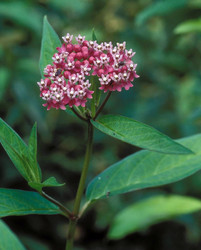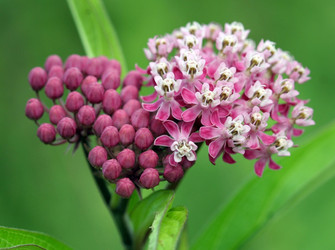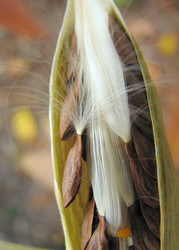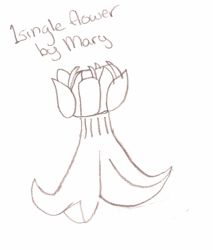Lakota name: Wahiŋheya ipi’e, which means “used to doctor gopher”. The other Lakota name for it is wahca'hca hu (“stem”) bloka, which means “male flower stem”.
 Listen to Lakota Plant Names: wahiŋheya ipi’e, wahca'hca hu bloka
Listen to Lakota Plant Names: wahiŋheya ipi’e, wahca'hca hu bloka
Scientific name: Asclepias incarnata
Common name: Swamp milkweed
Chemical activity: The juice of this wetland milkweed is less milky than that of other species. The genus was named in honor of Aesculapius, Greek god of medicine, undoubtedly because some species have long been used to treat a variety of ailments. The Latin species name means "flesh-colored." The threats that this flower gives is that it is slightly toxic. Animals in some areas have been dropping in population because they are eating this plant. Some of the animals include some local animals like squirrels and chipmunks. The plant has medical uses also. More specifically, the medicine relates to appetite-suppressing compositions comprising an extract product of an Asclepias plant. It would be used today to help lose weight like much of the other appetite-suppressing plants like Paullinia sorbilis from Brazil.
Secondary compound: The main ingredient in this plant is known as P57, it seems to send a signal to the hypothalamus of the brain that tells the body it is no longer hungry. This is still used today for a weight loss supplement.
Description: The flowering of it is in the months June through October. This is the only wetland milkweed with lanceolate opposite leaves, pink or pinkish red hour-glass-shaped flowers, and milky sap. It serves as host plant for caterpillars of the Monarch butterfly. They probably could accelerate the advance of these desirable plants by sowing their seeds. Like all its relatives, swamp milkweed has a distinctive flower that is shaped rather like an hourglass–wide at the top and base, but constricted in the middle. The "base" is formed by five pigmented sepals that fold away from the rest of the flower, which includes five united petals. Each petal forms a "hood" over a stamen, or "horn" and the relative configurations of these two structures are useful in identifying various milkweed species. In the case of swamp milkweed, the horn is longer than its hood and curves away from it toward the flower center.




Asclepias incarnata. Left: branch with leaves and flowers © John Cardina. Center: close-up of buds and flowers © David Cappaert. Right: seed pod © 2006 Jenn Forman Orth
Within each milkweed flower there are two ovaries, which is why the plant's awl-shaped seed pods occur in pairs. These pods turn brown and brittle with age and burst open to reveal many silky-haired seeds. The seeds are dispersed primarily by wind but also float on ponds and streams. The milkweed gets its name from its white sap. Swamp milkweed is far less sappy than many of its relatives. Milkweed sap is a viscous fluid that flows through the plant's vascular system and oozes out when a stem or flower is damaged. Some animals won't browse on milkweed foliage because of the bitter sap, which contains glycosides that are at least mildly toxic. However, Monarch caterpillars in particular thrive on milkweed and concentrate those glycosides in their own bodies–which in turn make them unpalatable to potential predators.
Distribution: You can find it in all states except for California, Arizona, Washington, Oregon, Mississippi, and Hawaii. In South Dakota it can be found in 30 counties. In Canada it is found in 3 regions.
The federal status of this plant is threatened and endangered.
Information on the Internet
- enature: Swamp Milkweed
- USDA Plants Database: Asclepias incarnata
- hilton pond: Swamp Milkweed
- Northern Prairie Wildlife Research Center: Swamp Milkweed
- CalPhotos: Asclepias incarnata images
- Alchemy Works: Asclepias incarnata
- Patent Storm: Appetite-suppressing compositions and methods
- Wikipedia: P57 (glycoside)




 Go to quick links
Go to quick search
Go to navigation for this section of the ToL site
Go to detailed links for the ToL site
Go to quick links
Go to quick search
Go to navigation for this section of the ToL site
Go to detailed links for the ToL site